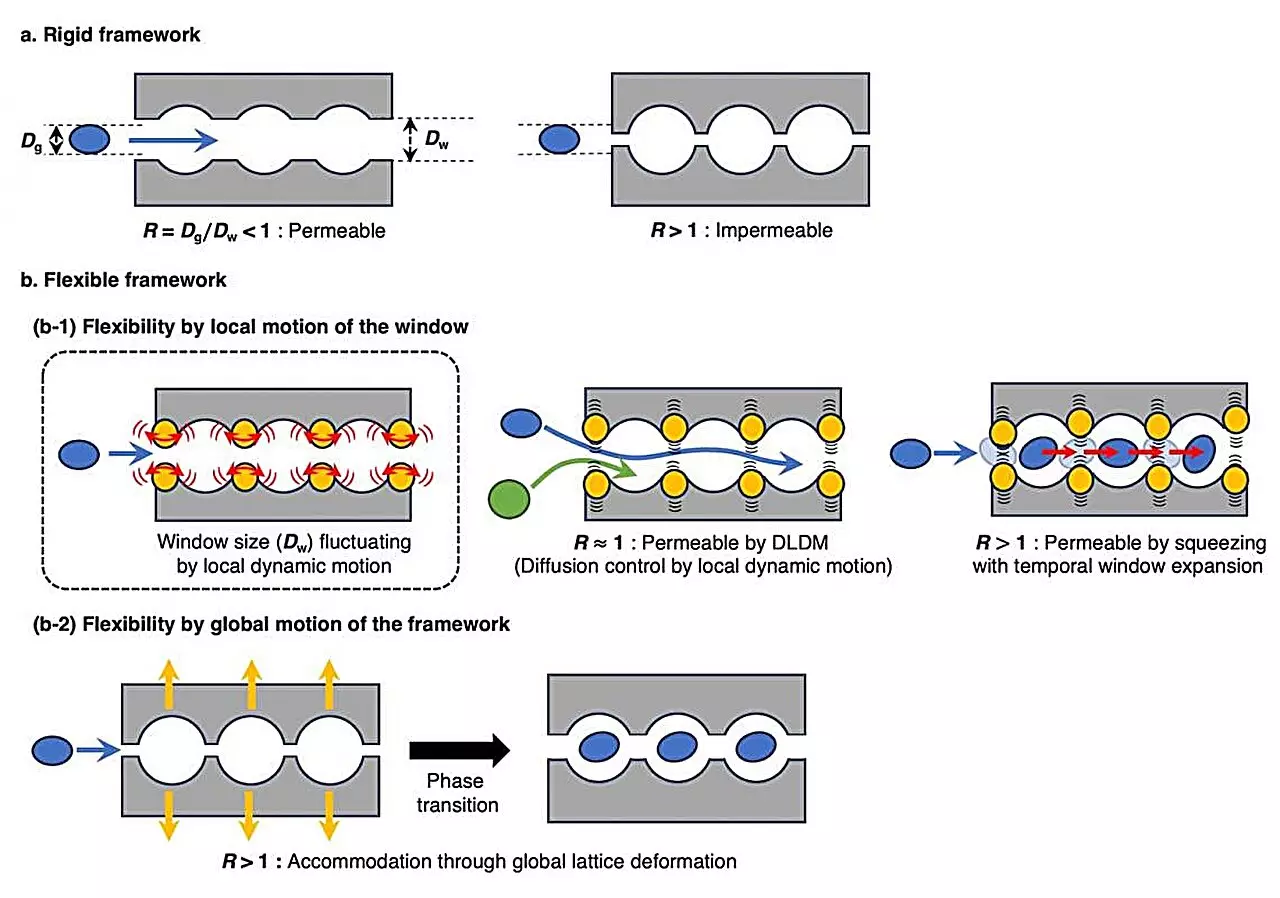Advancements in materials science have a profound impact on our ability to address energy storage and environmental concerns. Recent research by a dedicated team has unveiled a significant evolution in the understanding of porous coordination polymers (PCPs), alternatively known as metal-organic frameworks (MOFs). These materials, discovered in the late 20th century, have been largely recognized for their capacity to adsorb gases, which makes them critical in various industries ranging from clean energy to environmental monitoring. The newly published study in Communications Materials sheds light on the underappreciated characteristics of these materials, particularly a subset known as “soft” PCPs.
Porous coordination polymers are essentially molecular structures formed by metal ions linked through organic molecules, resulting in numerous micro-sized cavities. These tiny pores are the essence of PCPs, functioning much like sponges but designed specifically for gas rather than liquid absorption. According to Susumu Kitagawa of Kyoto University, this innovative approach to capturing gases like hydrogen can significantly contribute toward the production of cleaner energy and improved industrial gas filtering techniques.
The recent findings indicate that the first PCP, recorded in 1997, was capable of gas adsorption beyond initial expectations, exhibiting properties that align with the flexible, soft category of PCPs—attributes previously thought to have been developed much later. This understanding not only enriches our appreciation for these materials but also sets a new standard for future research.
The term “soft PCP” describes a unique flexibility in materials that allows them to morph and adapt their structure in response to the gases they store. This property could lead to increased storage capabilities, similar to how a flexible sponge adjusts its volume depending on the amount of liquid absorbed. Hirotoshi Sakamoto, the primary author of the study, emphasized this transformative nature, revealing that such adaptability could lead to enhanced efficiencies in capturing gases.
By employing advanced analysis techniques, including single crystal X-ray diffraction, the research team revisited historical data surrounding earlier PCPs. Their focus centered on a noteworthy cobalt PCP, known as Co-TG, which was one of the pioneering examples of gas-adsorbing materials introduced over 25 years ago. Initially celebrated for its gas absorption capabilities, the new research unveiled Co-TG’s ability to alter its form slightly, resulting in greater gas retention.
The team’s findings challenge widely-held beliefs about the historical progress of gas storage materials, suggesting that these early PCPs can be classified as significant contributors in the development of flexible structures. Such insights expose the opportunity for scientists to revisit historical materials utilizing modern analytical techniques, thereby uncovering untapped potential within well-established frameworks.
Ken-ichi Otake, a member of the research team, noted that these seminal PCPs were adept at gas trapping but also possessed an intriguing characteristic that had eluded attention until now. This discovery alters the narrative surrounding gas adsorption history and paves the way for further exploration into the structure and functionalities of these versatile materials.
The implications of understanding the “softness” of early PCPs extend beyond mere academic interest. In practical terms, this breakthrough could revolutionize various applications including gas storage and separation technologies, carbon dioxide capture efforts, and the development of energy storage systems such as hydrogen fuel cells. The ability to store gases more effectively and sustainably is paramount in addressing current energy challenges.
Ultimately, this research underscores the importance of a historical perspective in material science. The principles discovered in the evolution of PCPs remind us that past innovations can still provide valuable insights and opportunities for future advancements. Kitagawa’s assertion about the significance of re-evaluating established scientific territories rings true: open-minded exploration can often reveal pathways to innovation and enhanced functionality.
The research conducted on porous coordination polymers elucidates a previously overlooked dimension of these materials that could significantly impact future technology. With renewed interest in the characteristics of early PCPs, scientists stand poised to unlock advanced applications in gas storage and filtration, ultimately contributing to cleaner energy solutions and sustainable practices. The journey of these materials reminds us that understanding and innovation are often born from revisiting the foundations of past research.


Leave a Reply